|
- with a bit of help from the Young Nature Watch team, on Sunday, 15 November. Go to their page for more details and how to book.
Maybe you'll learn to tell the difference between a bright, fresh trametes versicolour fungus and the same type covered in green algae! (And I thought the green one was so pretty ...)  Male Great Bustard displaying. Photo: Great Bustard Project Male Great Bustard displaying. Photo: Great Bustard Project So far, so good with our indoor meetings. As David Waters said at our October meeting, why go to Antactica to see exotic bird life when it's right here on our doorstep? Anyone who enjoyed his talk about the Great Bustard project on Salisbury Plain will have been absolutely astounded at these amazing creatures. Supposedly something like a goose but to my mind much more like a flying super-turkey - which may be why they were hunted to extinction in the 19th century. You can help keep this project going in all sorts of ways, from just £10 to adopt a chick up to as far as your generosity will take you. How can you resist? Find out how and why on our Talks/Whatyoumissed page. 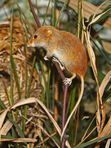 Llez, CC BY-SA 3.0 Llez, CC BY-SA 3.0 This absolutely brilliant event last Saturday (17th) was organised by our Young Nature Watch, with eight teams out hunting for these cleverly-disguised little nests. Izzy Fry - she of the lovely blog - was in our team and demonstrated her 'natural' aptitude by finding a new nest even before we reached the area we were surveying. I'm hopelessly uncompetitive but even so I was mightily relieved to spot just one of the 19 nests that my 'team' found. That most of them had been collected previously and 'planted' by the organisers not one whit detracted from the excitement. For a bit more about this, go to Young Nature Watch page.  I'd not heard of the Birdwatcher's Yearbook maybe because although I love watching birds no way can I claim to be a bird watcher - but it's warmly recommended for those who are. Go to the Reading List page for details of that and other ideas for the long, dark and maybe locked-down days ahead. 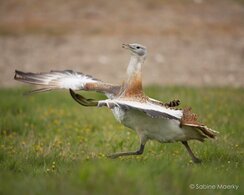 Photo: Sabine Maersky Photo: Sabine Maersky David Waters' talk about the Great Bustard Project was a wonderfully cheering way to spend a dark October evening. The last Great Bustards were shot in Wiltshire in the 1873 but over the last 30 years David's almost single-handed determination has brought the British population back to stability with over 100 birds now settled on Salisbury Plain. As David said in his talk, people travel thousands of miles to Antarctica, but right here on our doorstep are some of the most amazing and handsome birds on earth. 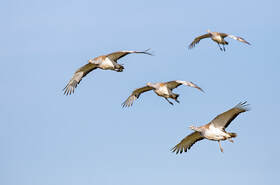 Bustards do fly – back in 2011 I relayed a report in I think Focus, that one had been seen over the Fonthill Lake and was thoroughly ridiculed for it. But although they are the heaviest of flying birds, they didn't think twice about heading off to Toulouse when they were doing their winter 'dispersal', which some of the hand-reared young did in the early days of the project. Because they have very long and strong legs, they don't need a 'runway' but pretty well do a 'vertical take-off'. Something that makes them welcome in our county is that they do virtually no damage to farmland or crops. Bustard chicks rely on Mother to be fed – for the first seven days, every hour - and how to keep them wild when they're being hand-reared is a challenge. They can be fed by a puppet with a Mother Bustard head but disguising the human who cleans out the pen is more of a problem – leading to the design of what bears an uncomfortable resemblance to what we now know as PPE. Once chicks hatch successfully, they stay with their mothers longer than usual, often till the following January. The collective noun for Bustards is a 'drove', and the first drove arrived in 2004. The survival rate for the first two years was 20%. But in 2007 the first eggs were found, with two females incubating a total of 8 eggs although none of them hatched. Almost certainly they were infertile because the females were too young, ie only 2-3 years old when they really need to be four or five years old to breed successfully. Because of problems evolving with the original source of eggs in Russia, research was undertaken to identify which of the other Bustard populations from right across Asia and southern Europe would be as or more suitable for the UK project. DNA samples were taken from the original British bustards, now stuffed (ie, taxidermied!) and in private house collections – there is of course one in the South Wiltshire Museum in Salisbury – and it was found that the Spanish population was nearly identical, where the largest population is north of Madrid in Castile-Leon. Eggs are taken very early in the season, so that the birds can lay a second clutch – which they often have to do as a result of natural predation. Finding a nest is incredibly difficult because the females lie so 'close' – they are virtually the same colour as the soil and almost flatten themselves into it. So finding them visually proved extremely difficult and in the end dogs were found to be most effective at sniffing them out.  The first chicks to arrive of course had to be hand-reared, but it seemed this had the effect of making them disperse over quite long distances over the winter – one was traced as far as Toulouse in France, but sadly nothing was heard of that one again. Now the chicks are reared naturally by their mothers, this winter dispersal no longer happens. This year, because spring was extremely wet followed by the very dry weather, no nests were found in the usual nesting area – but then eight were found in nearby lucerne. Because this has to be cut for silage, the eggs had to be removed and incubated and the mothers did then lay a second clutch in their usual breeding area.  Handsome is as handsome does - a well-preened male bustard showing off to his rivals. Handsome is as handsome does - a well-preened male bustard showing off to his rivals. Bustards have some unique characteristics including that they have three forward-facing toes and they don't have a 'preening gland' - when preening for their mating-season 'displays' from late January onward, the males instead use 'powder down' which is UV sensitive so the plumage fades during the day. COVID has meant that the Great Bustard Project needs financial support more than ever, but this can be anything from just £10 to sponsor a chick and receive updates on its progress over the year, up to Life Membership at £600. Go to www.greatbustard.org for details. 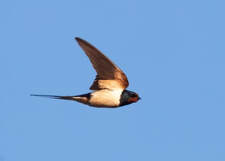 Swallow in flight. Photo - Abby Eaton Swallow in flight. Photo - Abby Eaton It's also The Global Bird Weekend! when it is aimed to create a world record for the largest number of birds seen by the greatest number of people on this peak migration weekend. Our swifts are long gone and we hope safely across the Channel. House martins have had a bad time trying to cross, but swallows are still sometimes to be seen. It is hoped that at least 25,000 participants will go out birdwatching on Saturday 17 October 2020. The goal is to record more than 6,000 bird species. All you have to do to join in is go out birdwatching and enjoy what you see – with family, friends, groups or just take time out on your own - and then report it using a free eBird Account. For full details, go to the website We were unable to go ahead with this guided walk because Dorset Wildlife Trust have cancelled all such group visits.
Regardless of COVID restrictions, the Island is now closed to visitors until the Spring. We very much hope, of course, to be able to re-schedule this Field Trip for next year.  Red Admiral - Andrew Carter Red Admiral - Andrew Carter In November butterflies are thin on the ground, with just the chance of seeing some when the temperatures rise enough and the sun makes an appearance. You may see the odd red admiral, small tortoiseshell or peacock in your gardens and some years other species have been seen flying on the downs - meadow browns and small coppers for example in Crockerton Coombe, near Alvediston - and this, combined with the beautiful summery aroma of the herbs, made the winter of 2011 seem that much shorter. But that was then - you would think 2020 had been a good year for butterflies, after all the beautiful photos sent in by Abby Eaton and others. But the formal stats here tell a slightly different story, as Andrew Graham's full report on the MoreNews page explains.
Meanwhile, Chairman Peter Shallcross reminds us that we are optimistic that we can carry on with our winter programme: see the Talks page for full details on COVID-safe procedures now in place - ie you can't now just turn up as in Normal Times. Thursday, 15 October, 7.45pm, Victoria Hall: David Waters, Director, Great Bustard Group. Thursday 19 November at 7.30pm, Hinton Hall: Peter Thompson, formerly of the Game and Wildlife Conservation Trust, on farming and wildlife. and Saturday 14/Sunday 15 November depending on weather: Young Nature Watch bird-ringing demonstration. For info and bookings, email [email protected]. 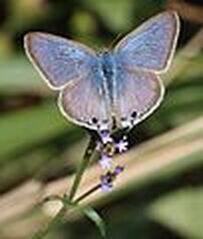 Lampides_boeticus_male_ on_Verbena_brasiliensis httpscommons.m.wikimedia.orgwiki User Alpsdake Lampides_boeticus_male_ on_Verbena_brasiliensis httpscommons.m.wikimedia.orgwiki User Alpsdake The Guardian newspaper reports that we may have a new native - the Long-tailed blue butterfly. It seems it's been detected laying eggs on the perpetual sweet-pea (not, I confess, a favourite of mine being pretty but scentless). Click here for the full story. No photo yet on Butterfly Conservation's website - but keep a look out next summer and perhaps yours could be there. ooking back on this year's butterflies, Andrew Graham writes 'There are around 60 species of butterflies regularly found in the UK and, with practice and a good eye, they are relatively easy to identify. Gauging their abundance can be used to gauge the population health of other, less easily identified, insect species. 'Part of this is the annual Big Butterfly Count, a popular way to contribute to our knowledge of how many butterflies are around each summer. Unfortunately, the number of butterflies recorded this year was down by 34% on 2019 and the lowest for 11 years. This fall may be due to several factors. One is that many species emerged earlier than usual during the warm spring, so the count might have only caught the end of many species flight periods. 'But this is just one year so we need to look at trends over longer periods. To get a clearer picture, scientists will use these results alongside other data. Across the country, more than 3000 locations are regularly monitored with timed area counts or 'transect walks'. On a transect walk, a recorder slowly walks along the same fixed route once a week, during the right weather conditions, noting the number of each species of butterfly that comes within an imaginary 5m square box around them. 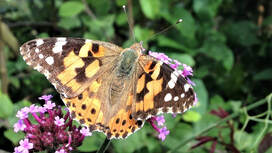 Photo: Elizabeth Forbes Photo: Elizabeth Forbes 'The late David Rear started such a transect in the Tuckingmill area in 2015 and some of us continue his work. The records here since David started doing it in 2015 show that 27 species have been seen at one time or another on the transect, that different species do better in some years than others and that a small number of species only crop up only once or twice. For example, last year painted ladies visited the UK in huge numbers and 56 were seen on the transect but were completely absent this year, reflecting the national picture. This likely happens when a species has a particularly good year in their favoured habitat and spreads out looking for new breeding locations and this is good news for anyone trying to create a wildflower meadow: with time, the butterflies will find it.' 'Don't read too much into the absence of Essex Skipper in 2018 and 2019 - in those years I was just recording all small orange skippers as Small/Essex but started looking a bit closer this year (since buying myself some "butterflying" binos which focus down a lot closer than my birding binos so I can get closer to look at the antennae).
'From a statistical point of view I am not sure one can read too much into what looks like a possible overall downward trend in numbers, although we would obviously be happier if they were going up. But most disappointing for me was the fact that the very good last brood of Small Coppers elsewhere wasn't reflected at Tuckingmill.' |
Photo: Avocets (Izzy Fry)
The headers display photos taken by our members. Do get in touch via the Contact Form if you'd like to submit a photo for selection.
Archives
May 2024
Categories
All
|


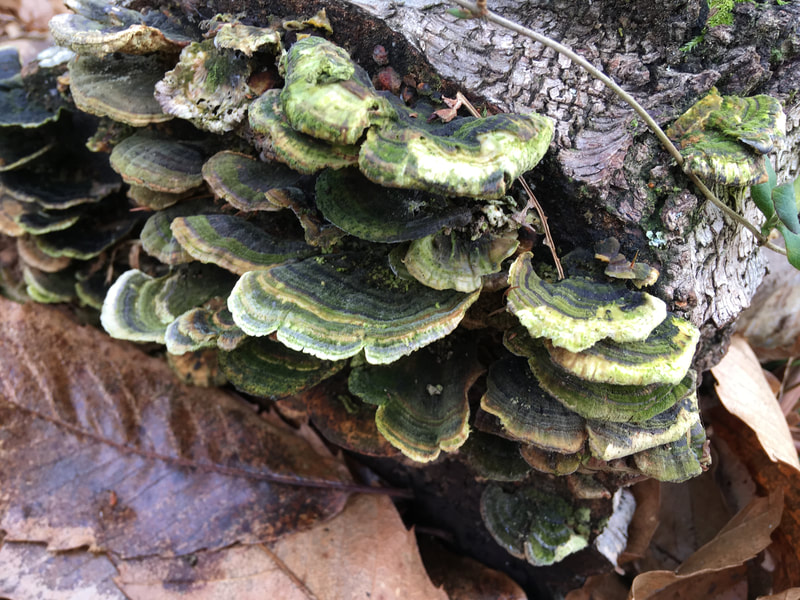
 RSS Feed
RSS Feed